Kevin Crozier flies the latest version of Century UK’s quick to assemble sport glider
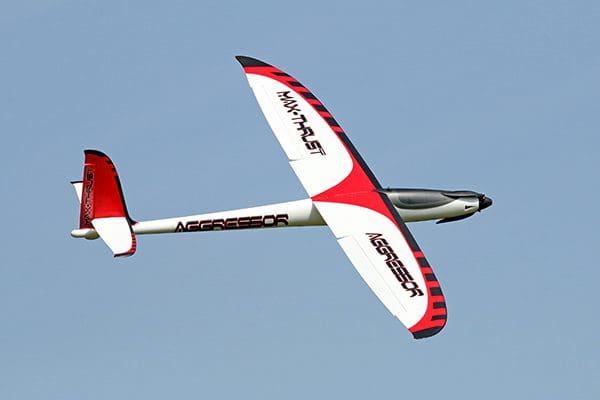
When I first started my second stint as Editor of this esteemed publication, I was a bit short of selfies to use on the Welcome page. So, I took the time, over a few flying sessions, to take mugshots of yours truly with various models. One of these was the Max-Thrust Lightning from Century UK, which I remember praising very highly, and rightly so as it had given me countless flights of highly enjoyable thermal hunting, mixed with the ability to perform spirited aerobatics both power on and power off.
Century UK have recently updated the Lightning and it now sports stylish new graphics and a new name, the Aggressor.
Enjoy more RCM&E Magazine reading every month.
Click here to subscribe & save.
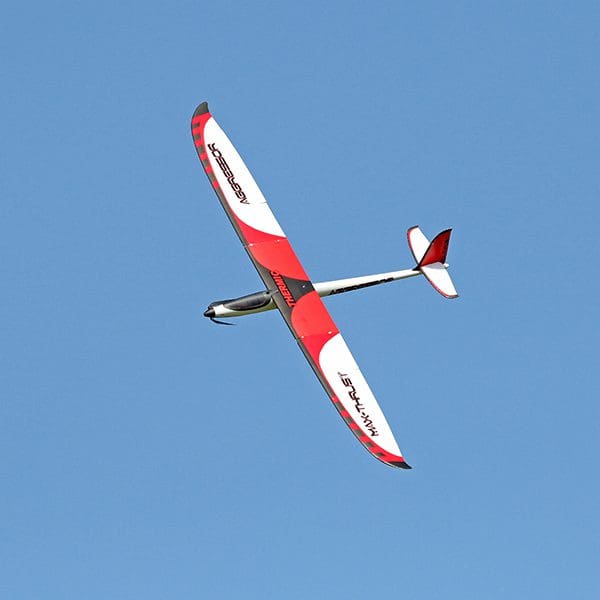
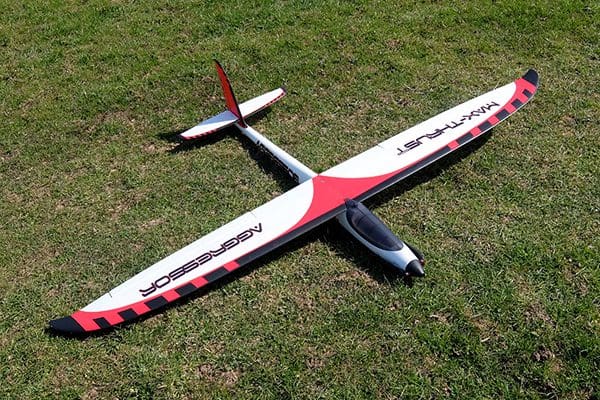
TAKE YOUR PICK
The Aggressor is available in several versions:
The ‘Sport’ version reviewed here has a 1.5 metre wingspan and is powered by a C2415-1150kV motor using the widely popular 3S 2200 mAh size of LiPo. It is fitted with 9g servos on the ailerons and rudder and a 9g digital servo operating the All Moving Tail.
Going up in size to two metres is the Aggressor ‘Thermic’. It is basically the same model but with an extra 500mm long wing centre section. This can be added or removed at the flying field, depending on weather conditions, especially on high lift days. Century UK were kind enough to include a centre section with our Sport kit so that we could assess the Thermic version too.
I often thought that the Lightning would make a great slope soarer and I did fly her a few times that way (power off) and she did not disappoint. The good news is that if slope soaring is how you prefer to do your glider flying a ‘Ridge’ version is now available, with the motor and prop stripped out and replaced with an EPOFLEXY nose cone. We have a kit of this version too, which we will be reviewing shortly.
Finally, imagine the Ridge glider with an Electric Ducted Fan mounted on top of the wing! That’s almost what you get when you buy the ‘Extreme’ version. However, to get the adrenaline flowing even faster this one has a shorter 1.2 metre span wing. To speed things up even more the punchy 3850kV fan motor is powered by a 4S 2250 size LiPo.
OPEN THE BOX
Like the Lightning the Aggressor comes in a slim box so it’s well worth keeping for storing the model in should you not want to fly her for a while.
Moulded from smoothly finished white EPOFLEXY foam both the wings and fuselage feature long carbon spars, which results in a light but very rigid airframe. All parts are ready covered in striking black and red graphics so if you have an aversion to applying stickers then this kit is well worth considering for this alone!
The fuselage, wings and tail halves are protected in bubble wrap bags and again these are well worth keeping for storage, especially the wing bags.
Copious use of broad tape secures the parts to moulded foam protective pieces inside the box, ensuring that this kit is very well protected against the rigours of transport, whether international when freighted or simply when bounced around by your friendly local delivery driver!
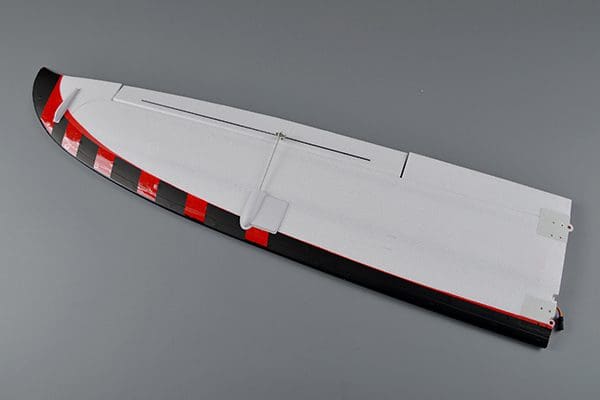
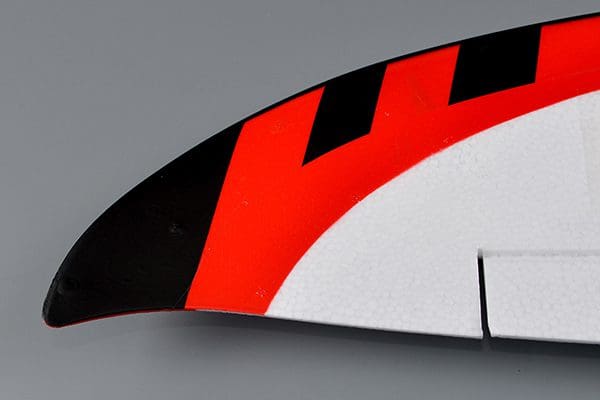
QUICK JOB
You won’t need much time to put this one together and for the intermediate and experienced pilots that are its target market then you probably won’t need to make much reference to the slim, but well produced instruction booklet provided either. But since Century UK have taken the time to write these notes then it’s well worth spending a few minutes to read them.
The only omission is the lack of recommended control surface movements, if only as a starting guide. I guess the reason for this is that as this model is aimed at experienced pilots then each will have their own ideas and preferences regarding set up. I cheated and simply copied over my model memory from the Lightning, which I have honed over several years and which I knew would result in a fine flying model. I have set up Launch, Thermal and Aerobatic flight modes.
The main thing is not to overdo the elevator response as All Moving Tailplanes like this one are very powerful. Around +/- 8mm should be fine and do make sure to start with the AMT aligned with the incidence pips moulded into the sides of the fin.
Assembly really is super quick. Slide the tail halves onto the square carbon connecting rod and secure using the screw down clamps provided on the underside of each panel. Ensure that the elevator has full and free movement.
The wings slide onto a long, square carbon joiner. A Y-lead is provided to connect the two aileron leads together where they exit at the wing roots. However, I used two extension leads instead so that I could set the ailerons up on separate channels and use them as up going spoilers during landing. About 8mm up works a treat but do make sure that you don’t overdo the limits of the aileron servos when mixed in this way. The completed wing is attached with two long screws, front and rear.
All that remains is to fit your chosen receiver into the front of the servo bay. The internal moulding narrows in this area so you can simply cut into the foam to provide a snug fit for your Rx. I also backed this up with a small piece of Velcro, attached to a smear of epoxy on the fuselage floor.
The servos in the review model were all well aligned, so I just needed to check that the screw-lock connectors used were all nipped up tightly.
There is plenty of room for a 3S 2200 mAh LiPo in the battery bay and two thin hook and loop straps are provided to secure it. It sits on top of a ply battery tray, which has generous cut-outs so that the battery can benefit from the cooling air coming in from below via a plastic grill glued to the belly of the model. This grill also provides generous cooling to the 40A ESC that is fitted in the space between the battery tray and the fuselage floor.
The powerful motor is further cooled by ducts on either side of the nose, as well as by a vented spinner, which houses the folding prop.
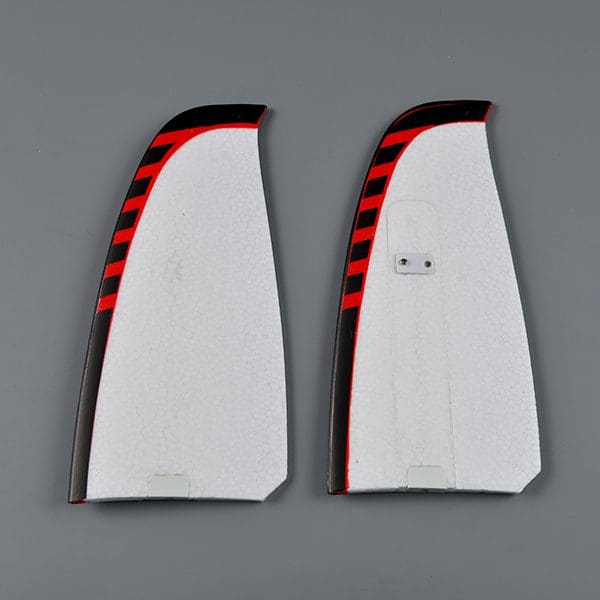
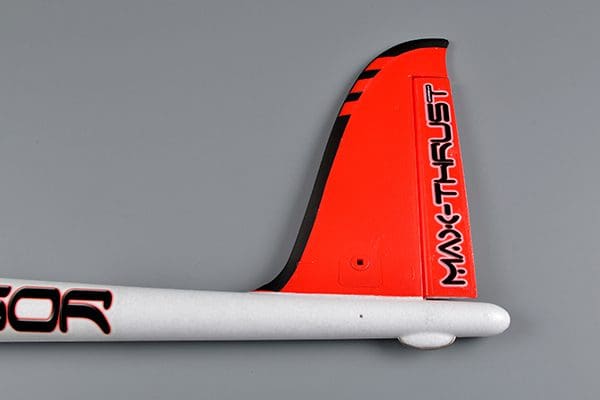
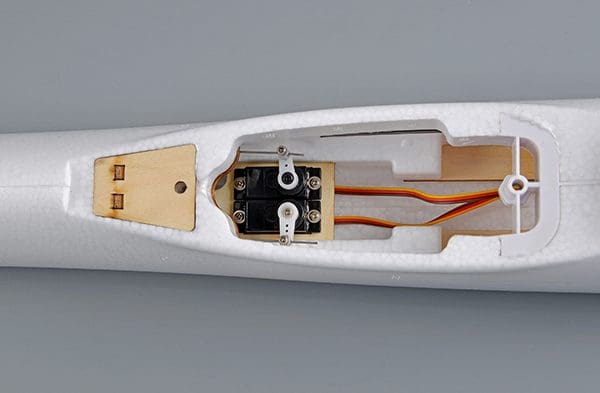
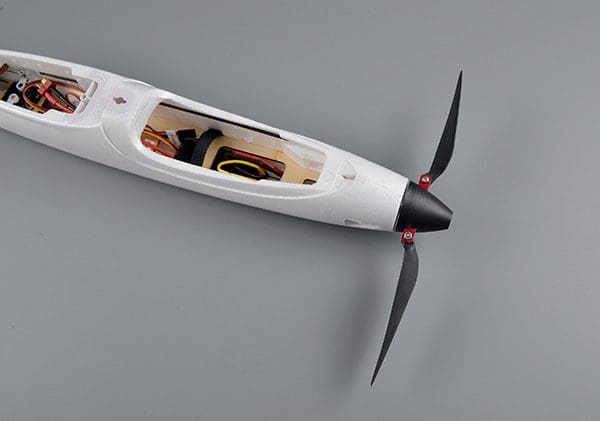
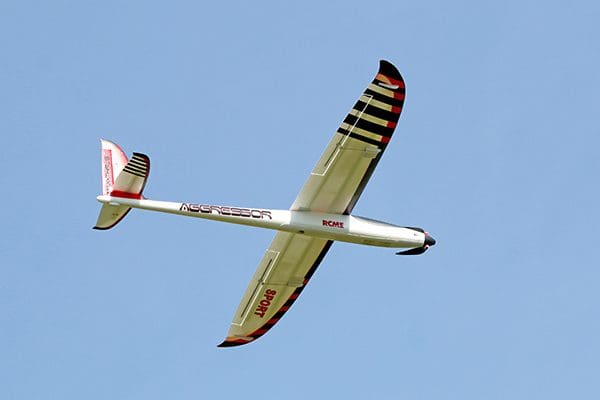
ANY ISSUES?
With a factory fitted All Moving Tail there is not much that you can do to it if it is not properly aligned with the wing. This one was slightly out of square, so I had to raise one side of the wing mount by a small amount using some thin wing tape.
This must be a production issue as the Ridge version has exactly the same issue and by the same small amount. I’m sure that you could just leave it and trim it out, but it always makes sense to make sure that a new model is properly aligned, even if it only needs a small correction like this one.
Another common trait is that the fin is slightly curved in the vertical, but it doesn’t seem to affect the operation of the rudder, so I left it well alone on both models.
IN FLIGHT
Knowing the Lightning so well I wasn’t expecting any dramas with the Aggressor and so it turned out. A slightly nose up launch soon had her climbing skywards and in a couple of circuits she was well trimmed.
As I had hoped, levelling out the wing and tail resulted in a neutral aileron setup, but the rudder did need a few clicks of left trim to compensate for that gently distorted fin. In Launch mode I also added a couple of clicks of up trim, but in Aerobatic flight mode the AMT is exactly as per the pips on the fin for a bit of extra penetration. Thermal flight mode sees a few more clicks of up, to slow her down for thermal sniffing.
As with the Lightning, the Aggressor really is a superb club sports model. Even with the standard wing, after a decent climb you can put her into the cruise and float around looking for signs of a raised wing tip. When that happens bank her towards the rising wing and, more often than not, she will catch any passing thermal and you will be away for a long soaring flight.
When the mood takes you simply flick into a less lofty flight mode and you can either enjoy diving from high up in the ether to gain speed, power off, and pull large, graceful loops and silent long rolls, or power up and just fly her as a conventional sport model, during which almost all club style aerobatics are well within her remit.
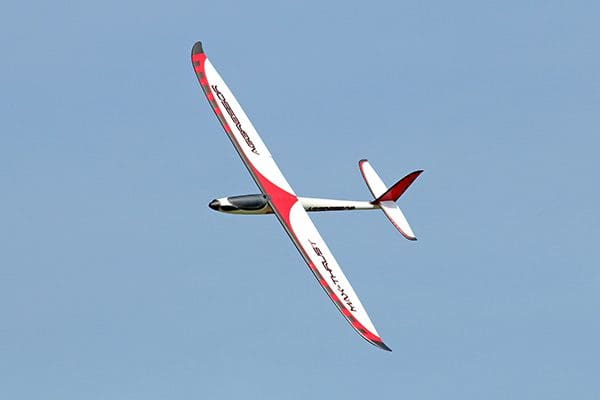
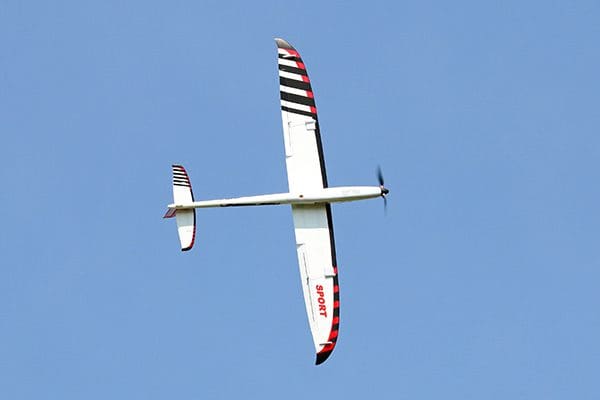
THERMIC WING
The 500mm long Thermic wing centre section is simply bolted between the two standard wing panels using the short white nylon nuts and bolts provided to lock it into place. Although the countersunk bolt heads blend into the top of the wing, underneath it’s a different story, leaving short lengths of bolt and the nuts showing. But sometimes it best to keep things nice and simple and that’s certainly true in this instance. Provided you keep a suitably sized crosshead screwdriver and nut runner in your flight box then fitting the Thermic wing is just a couple of minutes work.
It uses the same central carbon joiner as the Sport wing but comes with same size balsa strips to insert into the outer panels. These simply serve to pad out the insides of the joiner boxes at the outer ends of each wing, thus stopping the central joiner from sliding about. This makes sure that it stays firmly in the centre where it’s most needed. Again, it may sound a bit basic but, as with those wing bolts, it’s a simple remedy and works well. The Thermic wing is still aerobatic, and you can pull gentle loops and stall turns etc. But with the standard Sport wing being so adept at all the fancy stuff then this longer span version is probably best kept for high lift conditions.
Does it work? Well, I have to admit to being in two minds about the Thermic wing panel. Usually, I would have to say that any extension to a wing for thermal soaring would be a welcome addition. But the standard Sport wing thermals so well anyway that I have to wonder if it is worth fitting, at least for the style of flying that I think suits the Aggressor the best i.e., a mix of thermal and aerobatic flying during the same flight.
In my experience the Thermic wing doesn’t seem to add very much to the model’s soaring performance, apart from maybe making it easier to see at higher altitudes, but it does compromise the model’s spirited aerobatic performance.
It also feels a bit heavy. The standard model’s list weight is 1045g, but the review version tipped the scales just under this at 1030g. However, with the Thermic wing added this became 1264g. Mind you, it can also be fitted to the Ridge wing so it will be interesting to see how it compares on the slope, where the additional ‘ballast’ may well come in handy in stronger wind conditions.
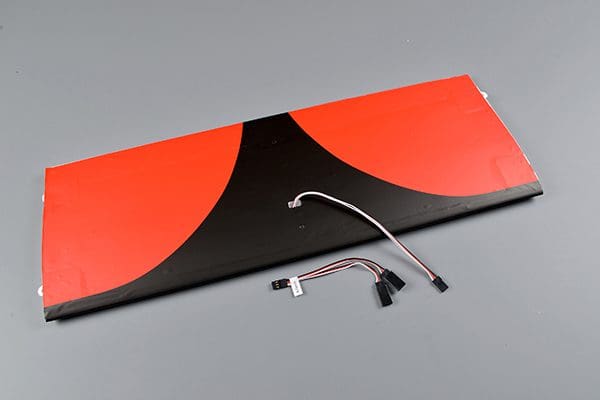
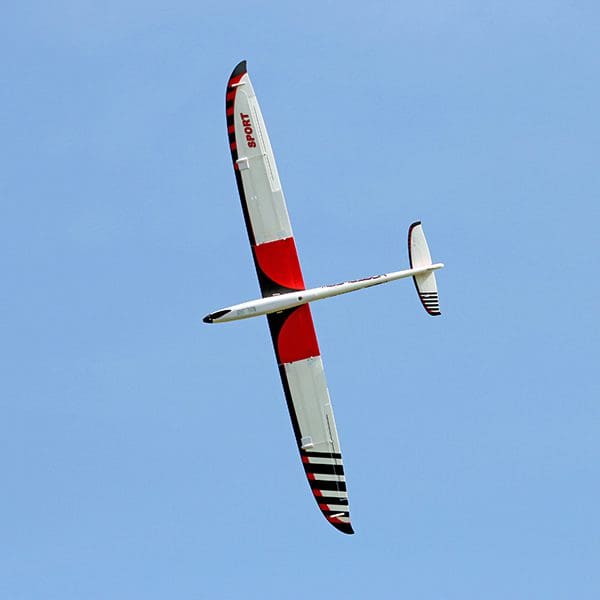
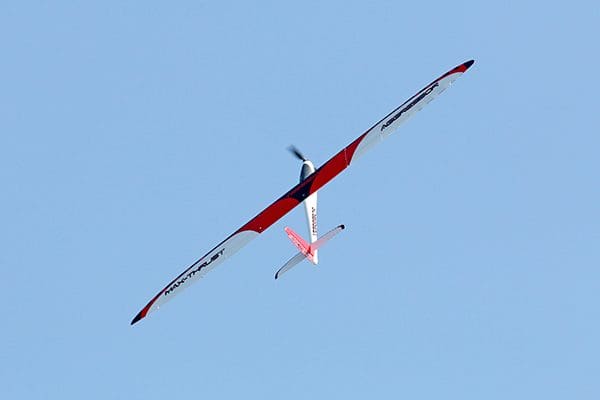
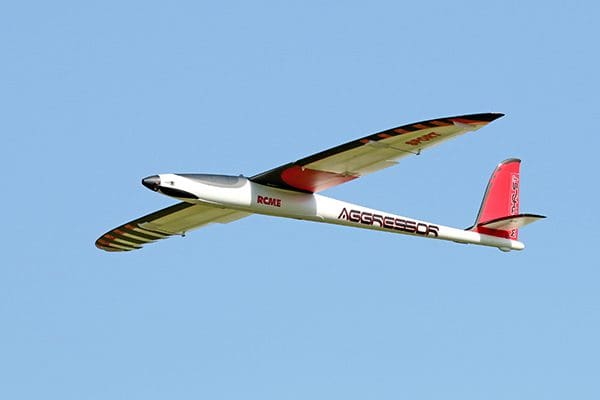
IN SUMMARY
Despite its name this compact glider is really a bit of a softy and whilst aimed at more experienced pilots, anyone who can handle their first low wing power model should have no problems flying the Aggressor.
For my style of flying, it provides almost the perfect combination of soaring grace with powerful aerobatic potential. It also has good duration; during my most recent outing with her she landed with just over half an hour on the timer, this being comprised of two or three sessions of aeros and at least two fairly decent bouts of thermalling in rising air – a perfect blend of flying styles and, for me, the best of both worlds!
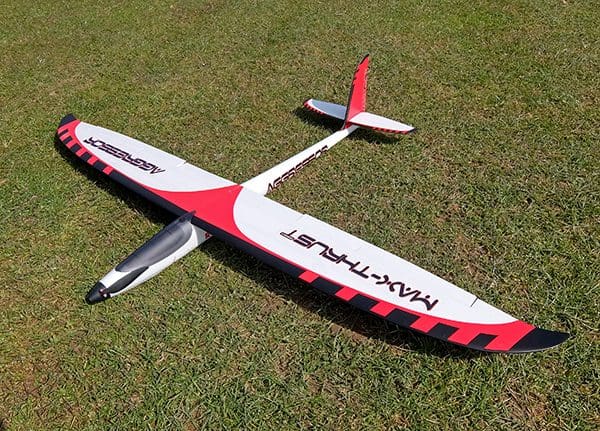
DATAFILE
Name: Aggessor
Model Type: Electric sport glider
Manufactured by: Max Thrust
Distributed by: Century UK Ltd. www.centuryuk.com
RRP: £169.96
Wingspan: 1500mm (59in)
Length: 1020mm (40in)
Flying weight: 1045g (37oz) (review model 1030g)
Power system: C2415-1150kV outrunner, 40A ESC, 3S 2200mAh LiPo, 10″ x 6″ folding prop
Functions (servos): Ailerons (2), elevator (1), rudder (1), throttle (via ESC)
Required to fly: Receiver & 3S 2200mAh LiPo




